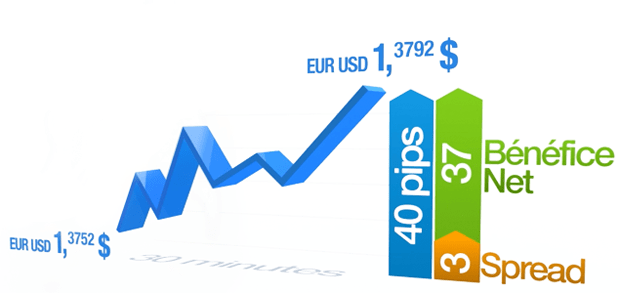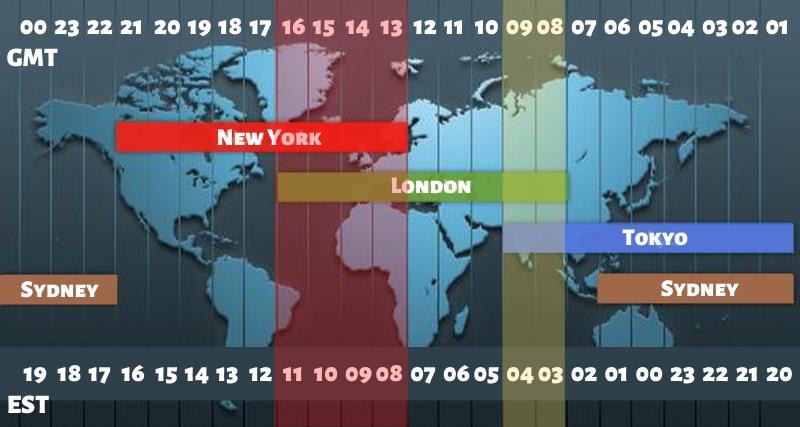
This article will provide information on day trading, stocks and investing in forex. After reading this article, you'll know how to become a successful day trader and begin investing in the currencies that you prefer. Learn how to use Forex to your advantage. Forex could even allow you to make a career out of it! How can you make the most out of Forex? You need to be able to identify the most successful strategies as well as those that are most risky.
Investing in stocks
An investor will know how important diversifying portfolios are. You can increase your investment performance by adding forex. But you must understand how it works, and what to consider before investing in currencies or stocks. Foreign exchange markets are different from stocks in many ways. Foreign currency markets are available 24 hours a days and are more open to international political issues. They are also accessible to more people making it easier to invest in them.

Forex trading
If you are deciding to trade stocks or forex, it is important to consider the potential for poor investment advice. Forex is more volatile. Forex traders experience both large gains and small losses. Although investing in the stock markets can be lucrative, returns are usually slower. Forex traders have to be serious about long-term strategy and ignore emotions. Here are some benefits of forex trading. Also, continue reading to discover how you can make money trading forex.
Day trading in forex
Before trading forex and stocks, there are many factors to consider. First, it is important to set a goal. You might feel tempted to just buy every stock in the world and hope for quick profits, but this is unrealistic. You may need to take time to master the trades and earn a profit. It is important to decide what trading method you want to use. You can use either technical analysis or fundamental analysis.
Investing In Stock Market Indexes
A stock market Index is an investment that measures performance of a certain number of stocks. Many investors use them to analyze market trends, identify industry trends, and invest in index funds. Although these indexes may not be representative of the stock markets, they can be useful tools to diversify portfolios. ETFs, one type of index fund, are one example. These are just a few of the many things you need before investing. These funds provide diversification and lower fees.

Investing for stock market futures
Investing in stock market futures is a way to diversify your portfolio and take advantage of increased volatility. They can be used to gain direct market exposure for commodity assets and secondary markets products. Futures trading can also be a great way to manage risk, as futures contracts are settled with cash settlements or physical delivery of goods. Futures can also settle in foreign currencies. This allows you to take bearish positions and reversals without having to increase your margin requirements.
FAQ
How do you choose the right investment company for me?
A good investment manager will offer competitive fees, top-quality management and a diverse portfolio. The type of security in your account will determine the fees. Some companies don't charge fees to hold cash, while others charge a flat annual fee regardless of the amount that you deposit. Some companies charge a percentage from your total assets.
You also need to know their performance history. Companies with poor performance records might not be right for you. Companies with low net asset values (NAVs) or extremely volatile NAVs should be avoided.
It is also important to examine their investment philosophy. Investment companies should be prepared to take on more risk in order to earn higher returns. If they're unwilling to take these risks, they might not be capable of meeting your expectations.
What is the main difference between the stock exchange and the securities marketplace?
The entire list of companies listed on a stock exchange to trade shares is known as the securities market. This includes options, stocks, futures contracts and other financial instruments. Stock markets are typically divided into primary and secondary categories. Stock markets that are primary include large exchanges like the NYSE and NASDAQ. Secondary stock markets are smaller exchanges where investors trade privately. These include OTC Bulletin Board, Pink Sheets and Nasdaq SmallCap market.
Stock markets are important as they allow people to trade shares of businesses and buy or sell them. It is the share price that determines their value. When a company goes public, it issues new shares to the general public. These newly issued shares give investors dividends. Dividends are payments that a corporation makes to shareholders.
Stock markets not only provide a marketplace for buyers and sellers but also act as a tool to promote corporate governance. Boards of directors, elected by shareholders, oversee the management. Boards make sure managers follow ethical business practices. If a board fails in this function, the government might step in to replace the board.
What is the difference in marketable and non-marketable securities
The main differences are that non-marketable securities have less liquidity, lower trading volumes, and higher transaction costs. Marketable securities, however, can be traded on an exchange and offer greater liquidity and trading volume. They also offer better price discovery mechanisms as they trade at all times. This rule is not perfect. There are however many exceptions. For instance, mutual funds may not be traded on public markets because they are only accessible to institutional investors.
Marketable securities are more risky than non-marketable securities. They typically have lower yields than marketable securities and require higher initial capital deposit. Marketable securities are typically safer and easier to handle than nonmarketable ones.
A large corporation bond has a greater chance of being paid back than a smaller bond. The reason is that the former is likely to have a strong balance sheet while the latter may not.
Investment companies prefer to hold marketable securities because they can earn higher portfolio returns.
Statistics
- Even if you find talent for trading stocks, allocating more than 10% of your portfolio to an individual stock can expose your savings to too much volatility. (nerdwallet.com)
- Our focus on Main Street investors reflects the fact that American households own $38 trillion worth of equities, more than 59 percent of the U.S. equity market either directly or indirectly through mutual funds, retirement accounts, and other investments. (sec.gov)
- US resident who opens a new IBKR Pro individual or joint account receives a 0.25% rate reduction on margin loans. (nerdwallet.com)
- "If all of your money's in one stock, you could potentially lose 50% of it overnight," Moore says. (nerdwallet.com)
External Links
How To
How to open a Trading Account
First, open a brokerage account. There are many brokers available, each offering different services. Some brokers charge fees while some do not. Etrade, TD Ameritrade Fidelity Schwab Scottrade Interactive Brokers are some of the most popular brokerages.
Once you've opened your account, you need to decide which type of account you want to open. You can choose from these options:
-
Individual Retirement Accounts (IRAs).
-
Roth Individual Retirement Accounts
-
401(k)s
-
403(b)s
-
SIMPLE IRAs
-
SEP IRAs
-
SIMPLE 401 (k)s
Each option offers different benefits. IRA accounts have tax advantages but require more paperwork than other options. Roth IRAs permit investors to deduct contributions out of their taxable income. However these funds cannot be used for withdrawals. SIMPLE IRAs are similar to SEP IRAs except that they can be funded with matching funds from employers. SIMPLE IRAs are very simple and easy to set up. These IRAs allow employees to make pre-tax contributions and employers can match them.
You must decide how much you are willing to invest. This is your initial deposit. A majority of brokers will offer you a range depending on the return you desire. Depending on the rate of return you desire, you might be offered $5,000 to $10,000. The lower end of the range represents a prudent approach, while those at the top represent a more risky approach.
After deciding on the type of account you want, you need to decide how much money you want to be invested. You must invest a minimum amount with each broker. The minimum amounts you must invest vary among brokers. Make sure to check with each broker.
After choosing the type account that suits your needs and the amount you are willing to invest, you can choose a broker. Before choosing a broker, you should consider these factors:
-
Fees-Ensure that fees are transparent and reasonable. Many brokers will try to hide fees by offering free trades or rebates. Some brokers will increase their fees once you have made your first trade. Don't fall for brokers that try to make you pay more fees.
-
Customer service: Look out for customer service representatives with knowledge about the product and who can answer questions quickly.
-
Security - Choose a broker that provides security features such as multi-signature technology and two-factor authentication.
-
Mobile apps - Check if the broker offers mobile apps that let you access your portfolio anywhere via your smartphone.
-
Social media presence – Find out if your broker is active on social media. If they don't, then it might be time to move on.
-
Technology - Does this broker use the most cutting-edge technology available? Is the trading platform user-friendly? Is there any difficulty using the trading platform?
Once you've selected a broker, you must sign up for an account. Some brokers offer free trials while others require you to pay a fee. After signing up, you will need to confirm email address, phone number and password. You will then be asked to enter personal information, such as your name and date of birth. You will then need to prove your identity.
Once verified, your new brokerage firm will begin sending you emails. These emails contain important information and you should read them carefully. These emails will inform you about the assets that you can sell and which types of transactions you have available. You also learn the fees involved. Be sure to keep track any special promotions that your broker sends. You might be eligible for contests, referral bonuses, or even free trades.
The next step is to open an online account. Opening an account online is normally done via a third-party website, such as TradeStation. These websites can be a great resource for beginners. When you open an account, you will usually need to provide your full address, telephone number, email address, as well as other information. After this information has been submitted, you will be given an activation number. This code is used to log into your account and complete this process.
You can now start investing once you have opened an account!